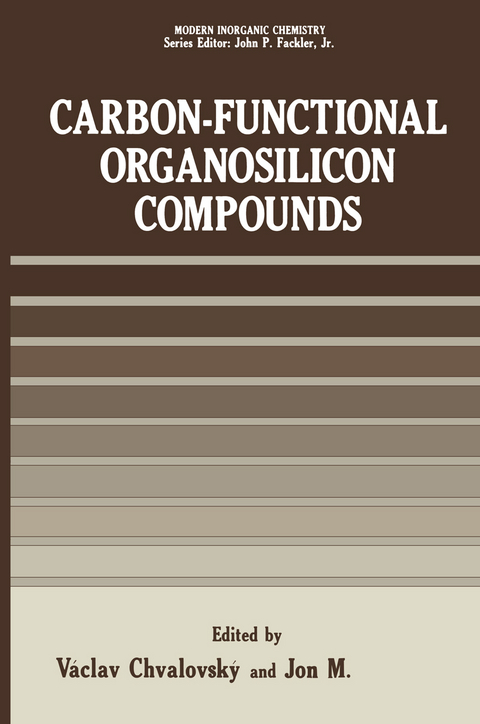
Carbon-Functional Organosilicon Compounds
Springer-Verlag New York Inc.
978-1-4757-0383-2 (ISBN)
1. Some Applications of Carbon-Functional Organosilicon Compounds.- 1.1 Introduction.- 1.2 The Production of Carbon-Functional Organosilicon Compounds.- 1.3 Uses as Derivatizing Agents for Natural Substances.- 1.4 Uses as Stationary Phases for Gas-Liquid Chromatography.- 1.5 Uses in Surface Treatment of Inorganic Materials.- 1.6 References.- 2. Intramolecular Interaction in The Chemical Behavior of Carbon-Functional Organosilicon Compounds.- 2.1 Introduction.- 2.2 Substituent Effects of Silyl Groups in Organic Reactions.- 2.3 Reactions with Pathway Dominated by Through-Space Interaction Between Silicon and A Functional Group.- 2.4 References.- 3. NMR Spectroscopy in The Investigation and Analysis of Carbon-Functional Organosilicon Compounds.- 3.1 Introduction.- 3.2 29Si NMR Spectroscopy.- 3.3 Aliphatic Carbon-Functional Compounds.- 3.4 Aromatic Carbon-Functional Compounds.- 3.5 Conclusions.- 3.6 References.- 4. Theoretical Aspects of Bonding in Organosilicon Chemistry.- 4.1 Introduction.- 4.2 Valence Shell Expansion from The Point of View of Quantum Theory.- 4.3 Hyperconjugation.- 4.4 Electronegativity.- 4.5 Electronic Effects of Silyl Substituents and The Possibilities of Their Characterization.- 4.6 The Chemistry of Silicenium Ions and Silyl Anions.- 4.7 Common Aspects of Chemical Reactivity of Carbon-Functional Organosilicon Compounds.- 4.8 The Chemistry of Multiple Bonded Silicon.- 4.9 Conclusions.- 4.10 Acknowledgment.- 4.11 References.
| Reihe/Serie | Modern Inorganic Chemistry |
|---|---|
| Zusatzinfo | XIII, 303 p. |
| Verlagsort | New York, NY |
| Sprache | englisch |
| Maße | 152 x 229 mm |
| Themenwelt | Naturwissenschaften ► Chemie ► Anorganische Chemie |
| Naturwissenschaften ► Chemie ► Organische Chemie | |
| ISBN-10 | 1-4757-0383-X / 147570383X |
| ISBN-13 | 978-1-4757-0383-2 / 9781475703832 |
| Zustand | Neuware |
| Haben Sie eine Frage zum Produkt? |
aus dem Bereich


